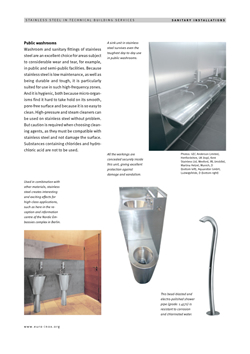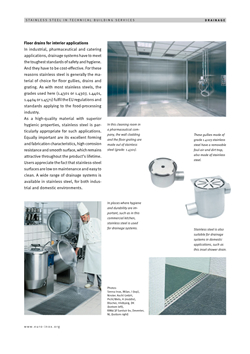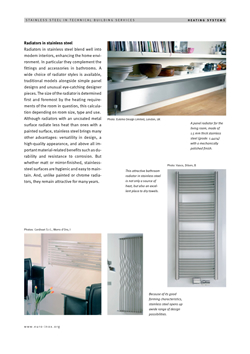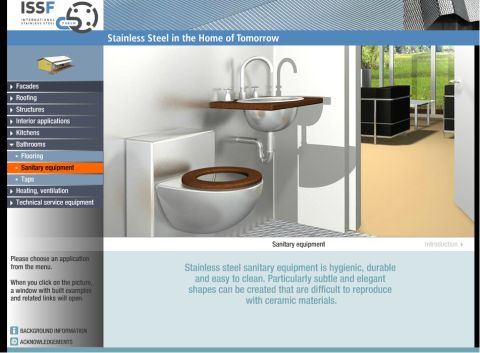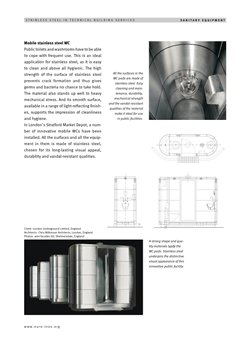Bathrooms may be glamorous spas or very utilitarian, but stainless steel’s cleanability, durability, and attractive appearance often make it a logical material choice. The applications span from soaking tubs and hammered sinks in residences to basic toilet and sink units in prison cells, to partitions, urinals, and dispensers in larger public restrooms to practical, self-contained outdoor units.
Whether they are referred to as a water closet (i.e. W.C), toilet, restroom or bathroom, these facilities fundamentally exist to safely dispose of human waste and to prevent environmental contamination and the spread of disease. Any discussion about an application that significantly affects the health, safety and welfare of humans and our environment is inevitably about sustainability. The materials need to be highly cleanable, long-lasting, and capable of withstanding graffiti and other deliberate damage.
Several factors can contribute to material deterioration in these environments: corrosive, bleach-containing cleaning products, urine concentration (i.e. no regular or periodic cleaning of exposed surfaces), and for outdoor stand-alone units, exposure to coastal or deicing salts or corrosive pollutants. Type 304 stainless steel and others with similar corrosion resistance are most commonly used for interior bathroom applications. Type 316 and other more corrosion-resistant stainless steels are typically the best choice for less frequently cleaned indoor bathrooms and outdoor units in corrosive environments.
Please see IMOA’s stainless steel Selection and Specification pages for more information.


